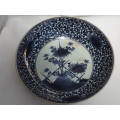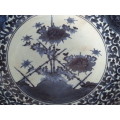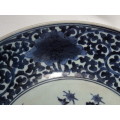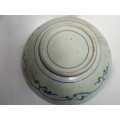This item has closed with no items sold
View the relisted Item
View the relisted Item
View other items offered by 19 Century Living425
Similar products
Antique Japanese ceramic Blue and White Bowl Edo period Late 17th Century Ref. B-28
Secondhand
R1,800.00
Closed
11 May 24 12:31
Shipping
Standard courier shipping from R30
R30 Standard shipping using one of our trusted couriers applies to most areas in South Africa. Some areas may attract a R30 surcharge. This will be calculated at checkout if applicable.
Check my rate
Check my rate
Ready to ship in
The seller has indicated that they will usually have this item
ready to ship within 3 business days. Shipping time depends on your delivery address. The most
accurate delivery time will be calculated at checkout, but in
general, the following shipping times apply:
Standard Delivery
| Main centres: | 1-3 business days |
| Regional areas: | 3-4 business days |
| Remote areas: | 3-5 business days |
Get it now, pay later
Seller
Buyer Protection
Product details
Condition
Secondhand
Location
South Africa
Time Period
Pre-1800s
Type
Plates & Bowls
Bob Shop ID
612239002
Description: Antique Japanese ceramic Blue and White Bowl Edo period Late 17th Century Ref. B-28
Maker: Japanese in origin, this piece could have been made by a number of potters.
Date: Estimated date 1680-1700
History: Most people associate the name Imari with Japanese ceramics. However, Imari is in fact a European name for export porcelain produced in the town of Arita in the Hizen province of Japan. It was shipped through the nearby port of Imari from the second half of the 17th century and the first half of the 18th century. Pre-export period Imari is called Shoki-Imari.
Marks/Observations: This is possibly a Ko-Imari piece. It is a very large bowl, beautifully hand-decorated with the Karakusa arabesque design and a central rondal of stylised Bamboo and Chrysanthemum flowers (the flower symbol for Japan). Many Imari ware have the karakusa arabesque designs and, the quality of the painting helps to determine the age. Early arabesques were finely drawn, but, as time progressed the style became progressively poorer until it looked like the tentacles of an octopus in the mid Edo period. This earlier pattern was known as Tako-Karakusa. By late Edo era, the pattern changed to a fern-like shape known as Shida-Karakusa. Now, look carefully at the pattern on the bowl. It has been very well executed, the drawing showing carefully placed lighter and darker areas to give a greater depth. Beautiful work throughout indicating an early decorated piece. The Karakusa design is said to have originated in China as the translation means Chinese Plants in Japanese.
The bowl appears to be of Stoneware construction as opposed to Porcelain. No back-stamp shown, it was more likely to be for export purposes.
The bowl shows a thick clear glaze with a crackled appearance and numerous minute bubbles resulting in an orange-peel effect. Glazing had not yet been perfected and these small bubbles are a very typical characteristic of early ceramic pieces. The reverse (bottom) of the bowl shows a single blue ring with five stilt marks. The side of the bowl shows a typical vine design with three concentric blue rings. Small pock marks in the glaze attest to the age of the bowl and the impurities found in the clay at that time. Some very slight staining on the outer sides is evident and there has been a very sympathetic repair to the rim where a fine crack is shown running down the side. The workmanship of this repair is incredible, to me this is how a antique ceramic should be restored. The slight crack is not noticeable to any degree but adds character to the bowl as well as advertising the fact that the restorer did not try to camouflage his work. Over restored items are not in vogue today in many parts of the world.
Condition: Overall very good considering the bowl has an estimated age of around 300+ years. No chips are observed on the rim or foot rim, and, apart from the small repair.
The bowl appears to be of Stoneware construction as opposed to Porcelain. No back-stamp shown, it was more likely to be for export purposes.
The bowl shows a thick clear glaze with a crackled appearance and numerous minute bubbles resulting in an orange-peel effect. Glazing had not yet been perfected and these small bubbles are a very typical characteristic of early ceramic pieces. The reverse (bottom) of the bowl shows a single blue ring with five stilt marks. The side of the bowl shows a typical vine design with three concentric blue rings. Small pock marks in the glaze attest to the age of the bowl and the impurities found in the clay at that time. Some very slight staining on the outer sides is evident and there has been a very sympathetic repair to the rim where a fine crack is shown running down the side. The workmanship of this repair is incredible, to me this is how a antique ceramic should be restored. The slight crack is not noticeable to any degree but adds character to the bowl as well as advertising the fact that the restorer did not try to camouflage his work. Over restored items are not in vogue today in many parts of the world.
Condition: Overall very good considering the bowl has an estimated age of around 300+ years. No chips are observed on the rim or foot rim, and, apart from the small repair.
Dimensions: The diameter is 34 cm and stands between 9 cm to 10 cm in height.
Price: R1800.00
Please note, I am NOT a qualified archaeologist/antiquarian and the description I have given is based on research of the subject.
This is a genuine antique. Please remember the classification of an 'antique' is that it should be 100 years old, OR MORE.
Terms: We offer a strict three-day approval period from the date the parcel reaches you. Refunds/credits are based on the cost of the article, NOT including delivery charges. Please advise us within this period whether you would like to return any article for a refund/credit. Although we pride ourselves in our packing, the buyer remains responsible for loss, non-arrival or damage to goods being sent to, or returned.



